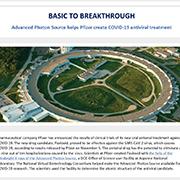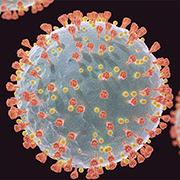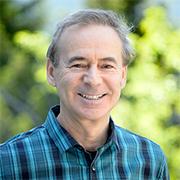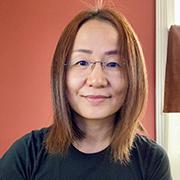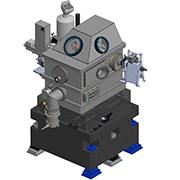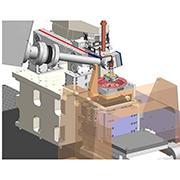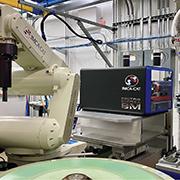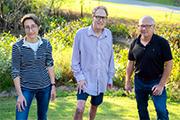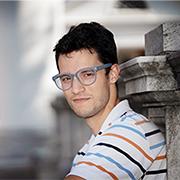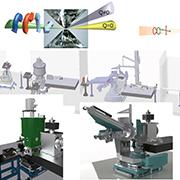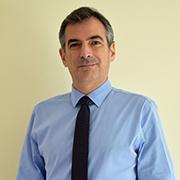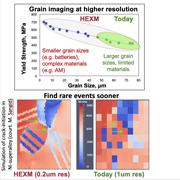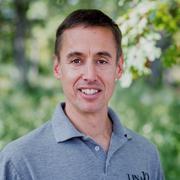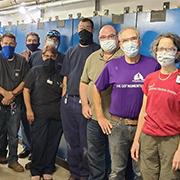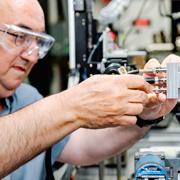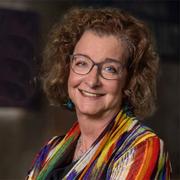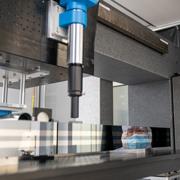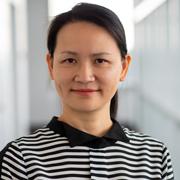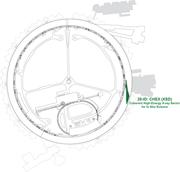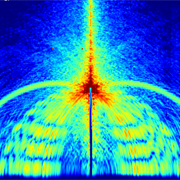News Feed - APS/User News
A new drug candidate, Paxlovid, which has proven to be effective against the SARS-CoV-2 virus, and a superionic ice that is neither liquid nor solid, both based on research at the Advanced Photon Source, are featured in the November 15, 2021 issue of the U. S. Department of Energy “Communique” e-newsletter.
For more than a decade, scientists using the Advanced Photon Source—a U.S. Department of Energy Office of Science user facility at DOE’s Argonne National Laboratory—have been making pivotal discoveries that are helping in the battle against COVID-19.
Alexander (Sasha) Zholents, Glenn Decker, and Arista Thurman have been presented with awards by the UChicago Argonne, LLC Board of Governors.
Yine Sun has been appointed as group leader of the Argonne Accelerator Systems Division Accelerator Operations and Physics Group at the U.S. Department of Energy’s Advanced Photon Source.
The Advanced Photon Source will hold a virtual town hall for users interested in the project to enhance the Bionanoprobe and the Microprobe imaging capabilities at 2-ID. The town hall runs from 10 a.m. to noon CT on Tuesday, November 30.
The Advanced Photon Source will hold a virtual town hall for users interested in the project to construct the In Situ Nanoprobe (ISN) at 19-ID in the Long Beamline Building and the PtychoProbe beamilne at 33-ID. The town hall runs from 10 a.m. to noon CT on Thursday, December 2.
Scientists at Pfizer created Paxlovid, a new drug candidate that proved to be effective against the SARS-CoV-2 virus, which causes COVID-19, with the help of the U.S. Department of Energy’s (DOE’s) Advanced Photon Source at the DOE’s Argonne National Laboratory.
The cycle of rising temperatures leads to increases in precipitation as well as droughts. What impact will these weather extremes have on Earth’s most effective water cleansers: wetland sediments? That question drives a $1 million, three-year U.S. Department of Energy grant awarded to a Georgia Institute of Technology research team of geochemistry, biology, and applied mechanics experts. Georgia Tech sediment samples will be examined at the atomic scale of individual atoms and electrons the DOE Office of Science's Advanced Photon Source.
Perrin Godbold is exploring green energy by trying to understand its most basic elements. The doctoral student in chemistry, nanomaterials, and electrocatalysis at the University of Virginia received a U.S. Department of Energy Science Graduate Student Research Award to work at the Advanced Photon Source.
The Advanced Photon Source will hold a virtual town hall for users interested in the project to construct the Polarization Modulation Spectroscopy (POLAR) feature beamline at 4-ID. The town hall runs from 10 a.m. to noon CDT on Friday, November 12, 2021.
The U.S. Department of Energy’s (DOE's) Argonne National Laboratory has named Laurent Chapon as associate laboratory director for Photon Sciences and director of the Advanced Photon Source, a DOE Office of Science User Facility at Argonne.
The Advanced Photon Source will hold a virtual town hall for users interested in the project to construct the High-Energy X-ray Microscope feature beamline at 20-ID in the Long Beamline Building. The town hall runs from 10 am to 12 noon CDT on Monday, October 25, 2021.
Michael Kelly is a group leader in the Argonne Physics Division, and he has extensive experience designing components for accelerators. So when the people behind the upgrade of the APS were looking for someone with just that kind of experience to help them build the state-of-the-art electron storage ring that will be at the heart of the new facility, they knew where to find him.
In preparation for the APS Upgrade, modifications were needed to the radiation shielding in the particle accumulator ring. The team expertly completed the job ahead of the estimated time needed.
Using APS x-rays, scientists will study tiny specks of asteroid 162173 Ryugu, collected by a Japanese space mission. Learning more about how this asteroid formed will further our understanding of the solar system, including Earth’s formation.
Laura Greene has been appointed by President Biden to serve on the President's Council of Advisors on Science and Technology. Greene is the chief scientist at the National High Magnetic Field Laboratory located at Florida State University, the University of Florida, and Los Alamos National Laboratory; and a member of the Advanced Photon Source Scientific Advisory Committee.
To provide x-ray beams that are both very bright and very tightly focused, an Advanced Photon Source (APS) team had to create a new system of mirrors, lenses and equipment for the upgraded APS.
In some ways, it’s no surprise Jie Liu grew up to be an engineer. She’s following in the footsteps of her father, who made engineering his career. From a young age, she said, she was fascinated by the big machines her father worked on, and she would take bicycles apart and put them back together, learning how they worked. Now she works as a principal mechanical engineer on the upgrade of the Advanced Photon Source, a DOE Office of Science user facility at Argonne.
You are invited to participate in a workshop on “Data Handling at the APS Coherent High-Energy X-ray (CHEX) Sector.” This online workshop will be held via Microsoft Teams on Thursday and Friday, October 21 and 22, 2021.
The Advanced Photon Source will hold a virtual town hall for users interested in the project to construct the Coherent Surface Scattering Imaging (CSSI) feature beamline at 9-ID. The town hall runs from 1:00 p.m. to 3:00 p.m. CDT on Wednesday, October 6, 2021.

